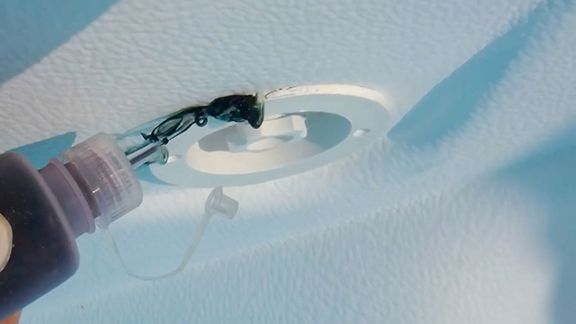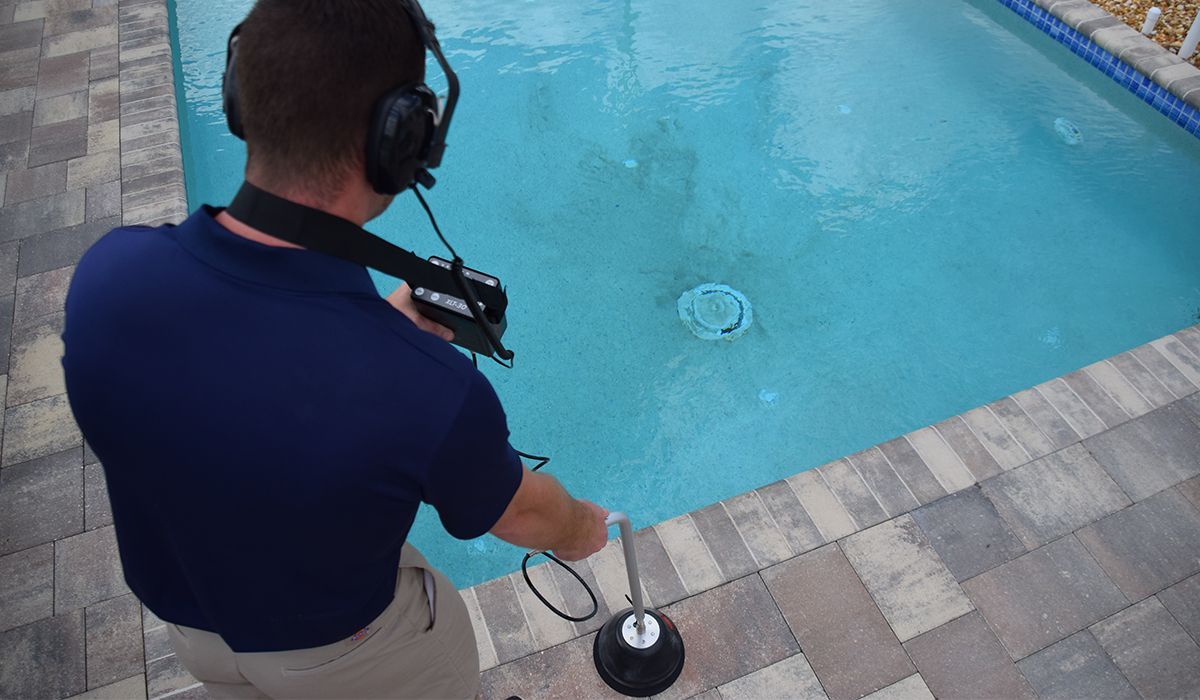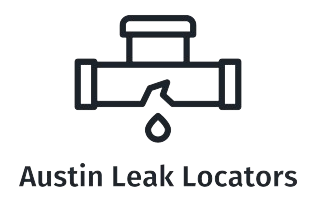Leak Testing
1. Pressure Testing
Pressure testing in pool leak detection is a precise method used to pinpoint leaks within the plumbing lines of a swimming pool. This method is particularly effective for identifying leaks that are not visible and occur in underground or concealed pipes. Here’s a detailed look at how pressure testing is typically conducted in pool leak detection:
- Isolation of Plumbing Lines: The first step involves isolating the different sections of the pool's plumbing system. This includes the main drains, return lines, and skimmer lines. Each section is tested individually to ensure that the entire system is thoroughly checked.
- Pressurization: Once a section is isolated, it is pressurized using either air or water. Air is often preferred in leak detection because it is less messy than water and any escape of air through a leak can be easily detected by sound or by using a soap solution that bubbles at the leak points. The pressure is usually monitored using a gauge to record any drop.
- Monitoring Pressure: The pressure within the pipes is carefully monitored for a set period. A steady pressure reading indicates that there are no leaks in that section of piping. However, if the pressure drops, it signifies a potential leak.
- Using Listening Devices: If a pressure drop is observed, acoustic equipment such as ground microphones may be employed to locate the leak more precisely. These devices are used to listen for the sound of escaping air, which helps pinpoint the exact location of the leak.
- Confirming and Marking Leaks: Once the leak is located, the area is usually marked for repair.
Pressure testing is highly effective because it allows for a non-invasive examination of pipes that might be buried deep and are otherwise inaccessible without significant excavation. This method not only confirms the presence of leaks but also accurately locates them, making it a critical tool in maintaining the structural integrity and operational efficiency of pool plumbing systems.

2. Dye Testing
Dye testing is a straightforward and effective method used in pool leak detection to identify and locate small leaks, especially in the pool's structure such as the shell, fittings, or around plumbing fixtures. Here’s how it typically works:
- Visual Inspection: Before starting the dye test, a visual inspection is usually conducted to identify potential areas where leaks might be occurring, such as cracks, gaps around fittings, or worn-out seals.
- Preparation: The pool is kept as still as possible, with all circulating pumps turned off to minimize water movement. This stillness helps in accurately identifying the source of the leak.
- Application of Dye: A small amount of brightly colored dye (commonly red or fluorescent) is injected into the water near the suspected leak area using a syringe or a small squeeze bottle. The dye is non-toxic and specifically designed to be visible under water.
- Observation: After applying the dye, the area is closely observed to see how the dye behaves. If there is a leak, the dye will be drawn out of the pool towards the leak, visibly flowing towards and highlighting the exact point of escape.
Dye testing is especially useful for pinpointing leaks in specific, localized areas of a pool and is one of the most cost-effective and non-invasive leak detection techniques. It is commonly used for leaks that are suspected in areas that are difficult to access or visually inspect directly.

3. Advanced Leak Detection Equipment
Using microphones and pipe cameras in pool leak detection offers advanced, non-invasive techniques to precisely locate leaks, particularly within the plumbing system of a pool. Here’s how each tool contributes to the leak detection process:
Using Microphones (Acoustic Detection)
- Principle: Acoustic leak detection relies on the principle that leaking water from pressured pipes creates noise or vibrations. This method is highly effective in environments where visual access is limited.
- Equipment: Specialized ground microphones or listening devices are used. These are sensitive enough to pick up the sound of water escaping from cracks or breaks in underground pipes.
- Process: Technicians listen for the characteristic sounds of leaking water. The intensity and frequency of these sounds help pinpoint the location of the leak. This method is particularly useful for detecting leaks in large or complex pool systems where direct visual inspection is not feasible.
- Advantages: It’s highly accurate and can locate leaks without the need to excavate or dismantle any part of the pool or its surrounding area.
Using Pipe Cameras (Video Inspection)
- Principle: Video inspection involves the use of waterproof cameras specially designed to navigate through pipes. These cameras provide a live feed to technicians, allowing them to visually inspect the internal condition of pool plumbing.
- Equipment: A flexible rod with a high-resolution camera on its tip is inserted into the pool’s plumbing lines. The camera is often equipped with lights and is capable of recording or transmitting video for real-time analysis.
- Process: As the camera moves through the pipes, it records images and video of the pipe's interior. Technicians can identify any irregularities like cracks, breaks, or obstructions that might be causing leaks.
- Advantages: Pipe cameras can visually confirm the integrity of pipes and other hard-to-reach areas without any need for excavation. This method not only locates leaks but also identifies potential problems before they lead to major damage.
Combined Approach
In many cases, both acoustic detection and video inspection are used in conjunction to confirm and diagnose pool leaks. This combined approach maximizes the accuracy of the leak detection process, ensuring that all potential issues are identified and addressed effectively. These technologies reduce the need for invasive procedures, save time, and help in efficient repair planning.


